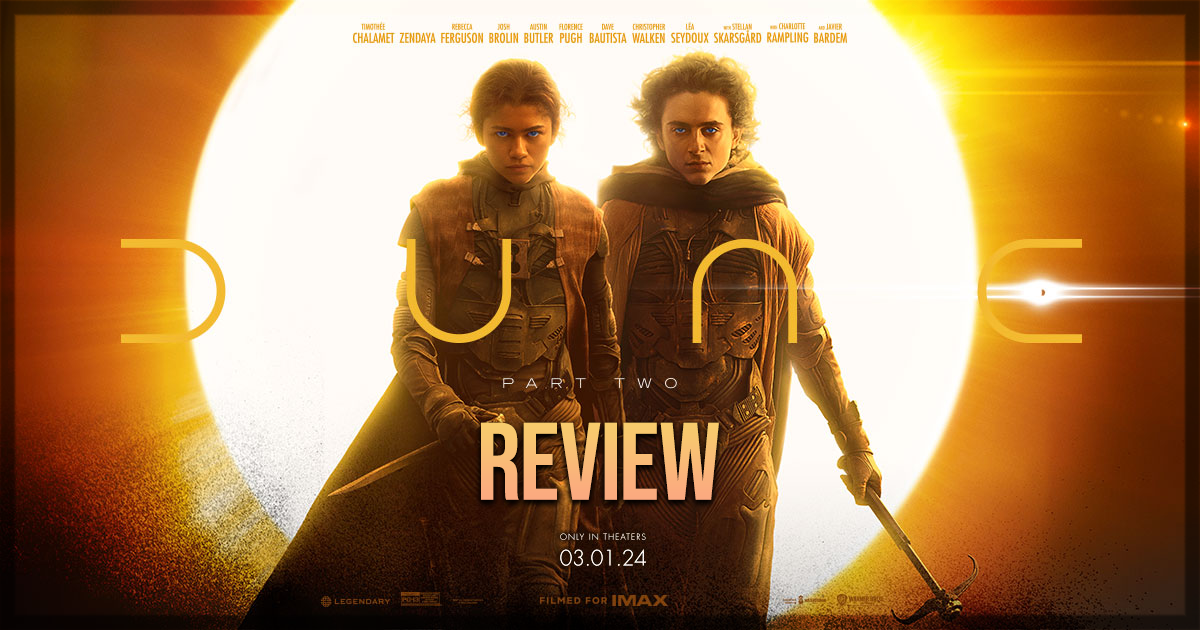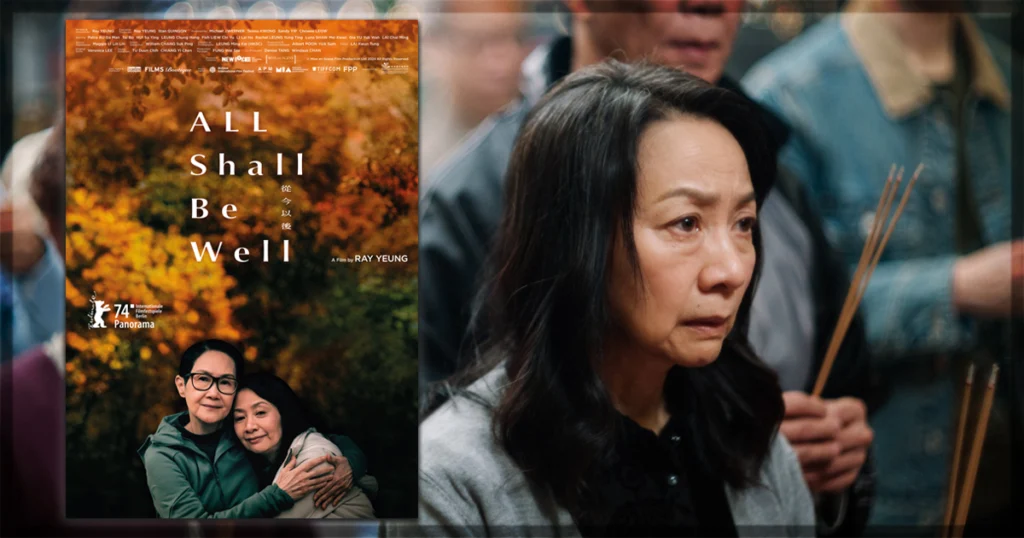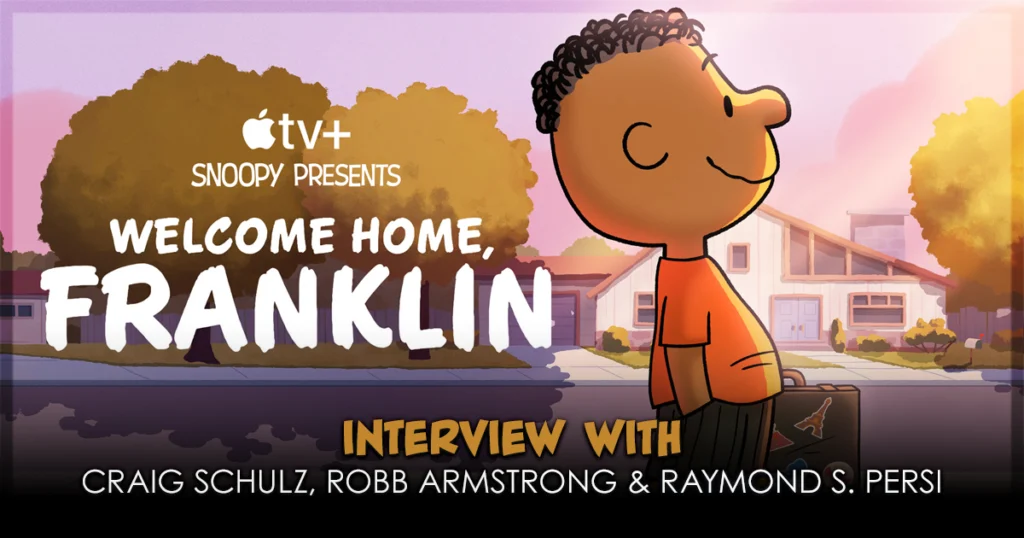Denis Villeneuve’s much-awaited sequel to 2021’s spi-fi epic, Dune, is the first truly great film of 2024. Dune: Part Two’s scope is awe-inspiring, its pacing is electric, and the themes it explores are suspenseful and thought-provoking. While a faithful adaptation to its behemoth-sized source material, the ways in which it inverts the formula of its traditional storyline only adds to its intensity and wonder. It is another certified banger in Villeneuve’s impeccable filmography.
The story of Dune: Part Two
An adaptation of the second half of Frank Herbert’s iconic 1965 novel, the story picks up a short while from when Part One left off. The exiled Paul Atredies (Timothée Chalamet) and his mother, Jessica (Rebecca Ferguson), have taken refuge with the Fremen, the indigenous people of the desert planet Arrakis. The Harkonnen family, who murdered Paul’s father and stole their home, have regained their grip on the planet, and Paul believes that an alliance with the Fremen will give them the resources they need not just to take back their home but to challenge the authority of the Emperor of the galaxy himself (Christopher Walken).
As Paul rigorously trains for battle, he grows close to the fierce warrior Chani (Zendaya), of whom he had multiple visions of during Part One. Yet there is anxiety in the air. Half the Freman people believe Paul is the Lisan-al-Gaib, a prophesied messiah in Freman legend. Jessica is stoking the flames of fundamentalism amongst those who believe that Paul is their chosen one, something that neither Chani nor Paul himself believes is the case. But when Paul starts to see visions of a terrible future brought on by his own hands, his desire for revenge becomes entangled with his endeavors to prevent this future.
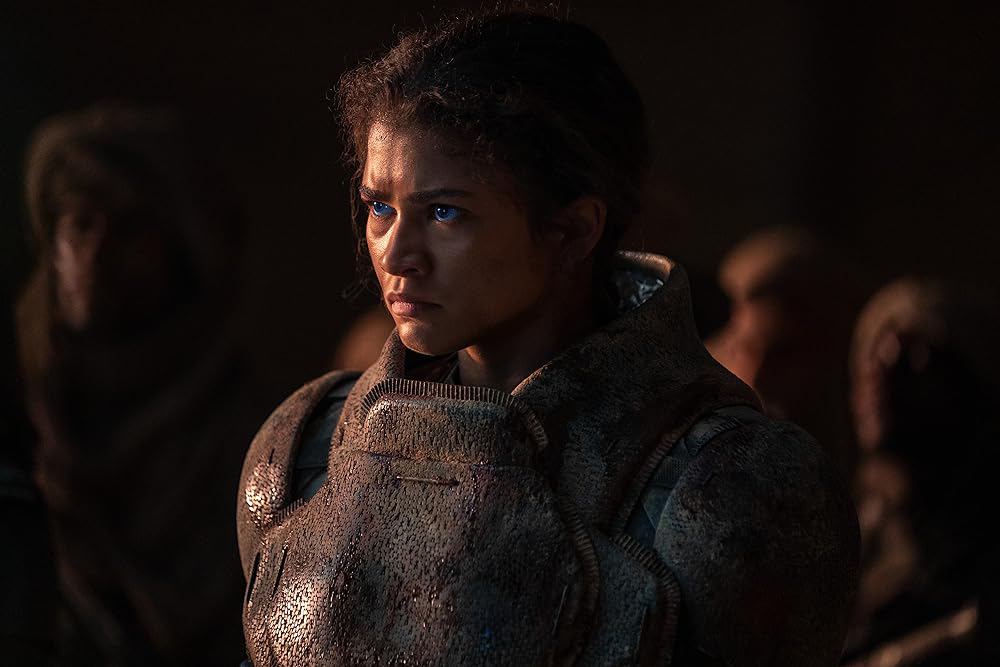
Dune: Part Two is packed with imagination and immersion
From the opening moments, the amplified ambition of Dune: Part Two becomes abundantly clear. While Part One certainly wasn’t short of stunning visuals or compelling tension, Part Two ups the ante to eleven. The wide shots of the Arrakis desert capture the size and majesty of this desert world in breathtaking detail. Our few moments off-world, such as in the Emperor’s domain, maintain that grandeur and otherworldly wonder that only sci-fi epics are able to capture.
The most dazzling of all these visuals occur in a Harkonnen colosseum. A vital moment for introducing a key antagonist, this colosseum is located on a planet that orbits a black star. As such, the sun’s absorption rather than the emission of light transforms this world into a monochrome hell where the black and white tones somehow make the death and bloodshed more horrific. The film is packed with imagination and immersion via its gripping set designs, vibrant color schemes, and colossal sense of scale.
Enhancing this vivid sense of fantasy is the action. The first film was brilliant, but it was arguably more of a stage setter. Dune: Part Two wastes no time demonstrating its action genre skill. Not only is it dynamic in its use of choreography and camerawork, but it also deftly blends with the world’s idiosyncrasies created on screen. One moment sees Paul and Chani disrupting the Harkonnens’ mining efforts and using the unique constructions of the mining vehicles as a means of cover. Add on Hans Zimmer’s stellarly operatic score, and you have a faraway world whose narrative events feel alive.
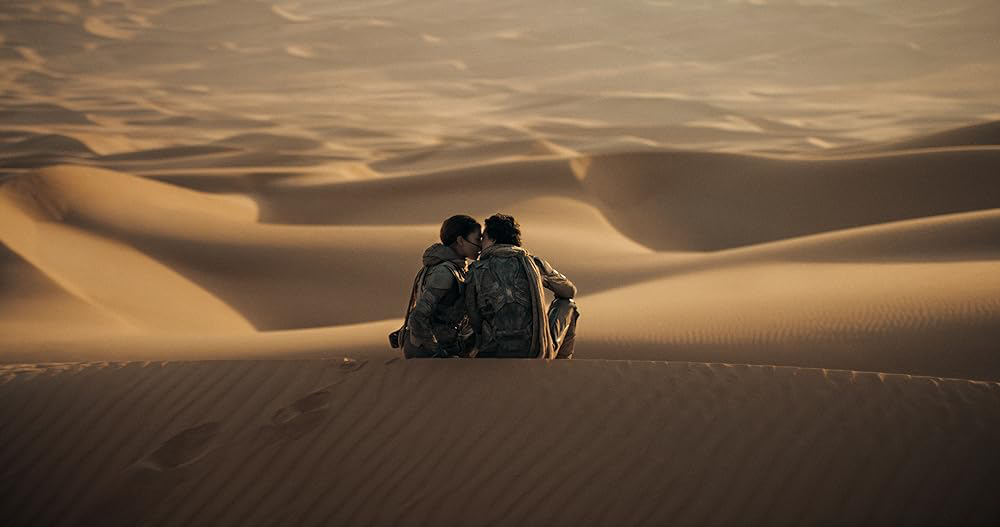
The magnificent ensemble cast brings to life the aesthetic delights
Navigating the aesthetic delights are characters whose personalities and arcs are brought to life through the magnificent ensemble cast. Dune: Part Two features one of Chalamet’s best performances. Paul is not another lone hero character journeying down the path laid out by Joseph Campbell and others. He is a complicated figure built by entitlement and revenge as much as empathy and curiosity. The first Dune, while only adapting half of the novel, triumphed as a tale of Paul transitioning from boy to man. Chalamet’s performance is one that is high on this new sense of adulthood while occasionally letting slip the boy that once was in the character’s more vulnerable moments. It’s a commanding piece of acting.
Joining Chalamet is a remarkable ensemble cast. Ferguson captures a delicate balance between maternal concern and zealous self-righteousness in her role as Jessica. Zendaya showcases a charisma and tenacity that makes Chani a spirited heroine who goes toe to toe with Paul comfortably. Among the new cast are Florence Pugh as the emperor’s inquisitive daughter, Lea Seydoux as a member of the ominous Bene Gesserit, and, most notably, Austin Butler as Feyd-Rautha Harkonnen, the heir to House Harkonnen and the standout villain of the film. Butler’s performance is terrifying in its reveling of sadistic entitlement and ego. In one particularly chilling moment, Feyd-Rautha is faced with the point of a blade mere inches away from his face, and his response is to laugh where most others would tremble with fear. That he is something of a foil to Paul only adds to the character’s intimidation factor.

The film dissects and subverts otherwise familiar story tropes
This is all an impressive list of merits, but where Dune: Part Two becomes a remarkable film is in its dissection of the tropes that form its otherwise familiar story; dissections that eventually result in subversion. Past adaptations of Dune and countless other films, from Dances With Wolves to James Cameron’s Avatar, have been justifiably lambasted for their glamorizing of white savior storylines. Dune’s cinematic participation in this tired trope is especially frustrating as the source material is often seen as dismissive of that very trope.
Villeneuve’s direction and script, co-written with Jon Spaihts, not only dodges the same pitfalls as past adaptations but directly confronts the danger of the white savior archetype. Going into full details would result in spoilers, but the script is well aware of the harmful consequences a white savior can bring to indigenous communities. The film’s seeming faithfulness to the novel will undoubtedly be commended, but its small tweaks throughout amplify its exploration of the white savior’s inherent toxicity and banality. While it technically completes the necessary stages of a traditional hero’s journey, the tiny seeds of implication the script plants early on bloom into thought-provoking revelations that are as horrific as they are, on the surface, triumphant. Not only does it celebrate Herbert’s original thematic aims, but it arguably goes even further with them.
Dune: Part Two is an exhilarating blockbuster
Dune: Part Two is a blockbuster that exhilarates and immerses but also intrigues and captivates through its cinematic subversions. It captures the spirit of the novel in its textual and subtextual levels, creating a spellbinding epic whose themes and spectacle are brought to life through unrivaled mastery of craft. Sci-fi storytelling rarely gets better than this.
Dune: Part Two is now in theaters.
Learn more about the film, including how to get tickets, at the movie’s official website. Are you excited about Dune: Part Two? Are you doing any rewatches of the first film to prepare? Join the conversation with us on X @MoviesWeTexted.
You might also like…
‘All Shall Be Well’ Review: Yeung’s film is a rich and satisfying drama on acceptance (Berlinale)
‘Welcome Home, Franklin’ Interview with Craig Schulz, Robb Armstrong & Raymond S. Persi

